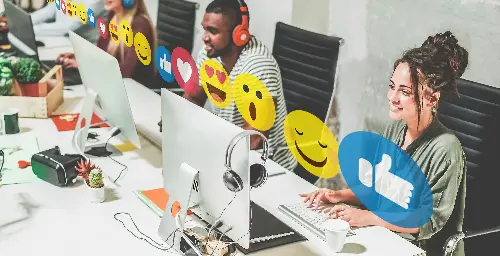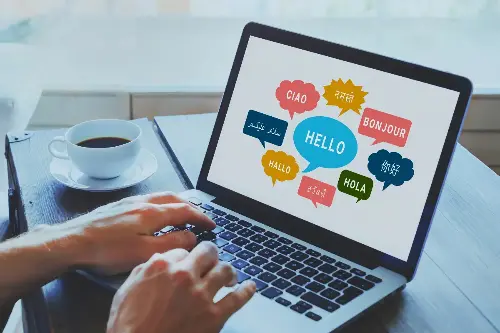Language is more than a tool; it is the brush with which we paint our thoughts, the bridge connecting hearts across time and culture, and the silent force shaping our sense of self. From the whispered secrets that strengthen friendships to the passionate speeches that spark world-changing movements, the art of expression lies at the very foundation of human connection.

The roots of language: A story of collaboration
Long before writing systems or grammar textbooks, language began as humanity’s most essential social glue. Studies of hunter-gatherer societies reveal that complex communication was as much about fostering cooperation as it was about exchanging practical information. Shared stories around ancient campfires didn’t just pass the time—they forged bonds and established group identities.
Interestingly, there are over 7,000 recognised languages in the world today, each a living record of human diversity. The existence of multiple, distinct sign languages used by Deaf communities demonstrates that spoken words are just one chapter in the story—gesture, facial expression, and body language all come together to transmit meaning. In fact, research suggests that as much as 70% of communication is non-verbal, reminding us that language goes far beyond vocabulary.
How language shapes thought and feeling
Curiously, language doesn’t just help us express what we already think—it actually influences what we are able to think. The Sapir-Whorf hypothesis, first formulated in the early 20th century, suggested that language shapes the way individuals perceive and interpret the world. While modern linguists debate how deeply language determines thought, multiple studies back up elements of this idea.
For example, speakers of languages with multiple words for “blue” are better at distinguishing subtle variations in that colour. Similarly, cultures whose languages oblige speakers to always specify spatial directions often develop extraordinary navigation skills. This interplay between language and perception can even affect memory and emotional experience; words give nuance and texture to the inner landscapes of our minds.

The poetry of connection: Language as an art
Every culture prizes the storytellers, poets, and musicians who weave words in extraordinary ways. But the art of language is not just for the stage—every compliment, heartfelt apology, or clumsy love confession is a testament to language’s power to move us. Consider the thrill of reading a favourite author or hearing an old proverb handed down through generations; the phrasing, rhythm, and imagery all make an impact that goes beyond the literal meaning.
It is this personal touch, the way we shape words to reveal who we are, that makes language such a beautiful medium. Even a simple “thank you” or “I’m sorry” can transform relationships and alter the course of lives. Language is the heart’s window—when we open it authentically, we invite others to see us as we truly are.
Language evolution: Adaptability meets imagination
Languages are living things, constantly changing with the times. New slang, borrowed words, and entirely new dialects emerge as people adapt their speech to fit modern needs and technology. The rise of social media has introduced emojis, GIFs, and internet shorthand as new “languages within languages,” adding visual and playful dimensions to our daily conversations.
Interestingly, bilingual and multilingual individuals often report that some feelings or ideas can only be fully expressed in one language, as if each tongue opens a different part of their soul. This phenomenon, called “code-switching,” highlights language’s flexibility and its intimate link to personal identity. It is no wonder that many people feel a deep nostalgia for their “mother tongue,” associating it with memories, family, and home.

Language as a force for good—and sometimes, misunderstanding
Language is imbued with the capacity to uplift or wound, to create clarity or confusion. A well-chosen phrase can heal a rift, inspire hope, or ignite a movement for social change. World leaders, activists, and artists have all recognised language’s power to mobilise hearts and minds.
Yet, it is just as easy for misunderstanding to creep in. The subtleties of irony, sarcasm, or cultural references do not always translate, leading to confusion—even conflict. Miscommunication is an inescapable part of being human, but it also reminds us of the importance of listening as much as speaking, of approaching dialogue with humility and curiosity.
The science of language: Linguistic diversity and the brain
Linguists estimate that a language dies every two weeks, taking with it unique ways of viewing the world. This loss is not just sentimental; every language encodes knowledge—about plants, animals, customs, and beliefs—that may be lost forever. Preserving linguistic diversity is therefore an act of respect for human creativity and wisdom.
Neuroscientific studies reveal that learning and using language engages large networks across the brain, fostering skills far beyond communication. Bilingualism, for instance, has been shown to delay the onset of dementia and improve multitasking. Language exercises our cognitive muscles, enhancing memory, problem-solving, and even empathy.

Embracing the art of expression
At its core, language is a testament to our desire for connection. Whether sharing dreams, negotiating conflict, or simply joking with friends, we are constantly reaching across the space between minds. The art of expression is not about perfect grammar, but about authenticity—finding ways to show what is in our hearts and minds.
So next time you reach for just the right word, send a message, or sit in silence with a trusted friend, remember that language is not simply a tool. It is a living canvas, a vehicle for empathy, and the most beautiful bridge we can build between ourselves and the world. In cherishing and nurturing this art, we honour not just the history of our species, but also our endless potential for connection and understanding.
